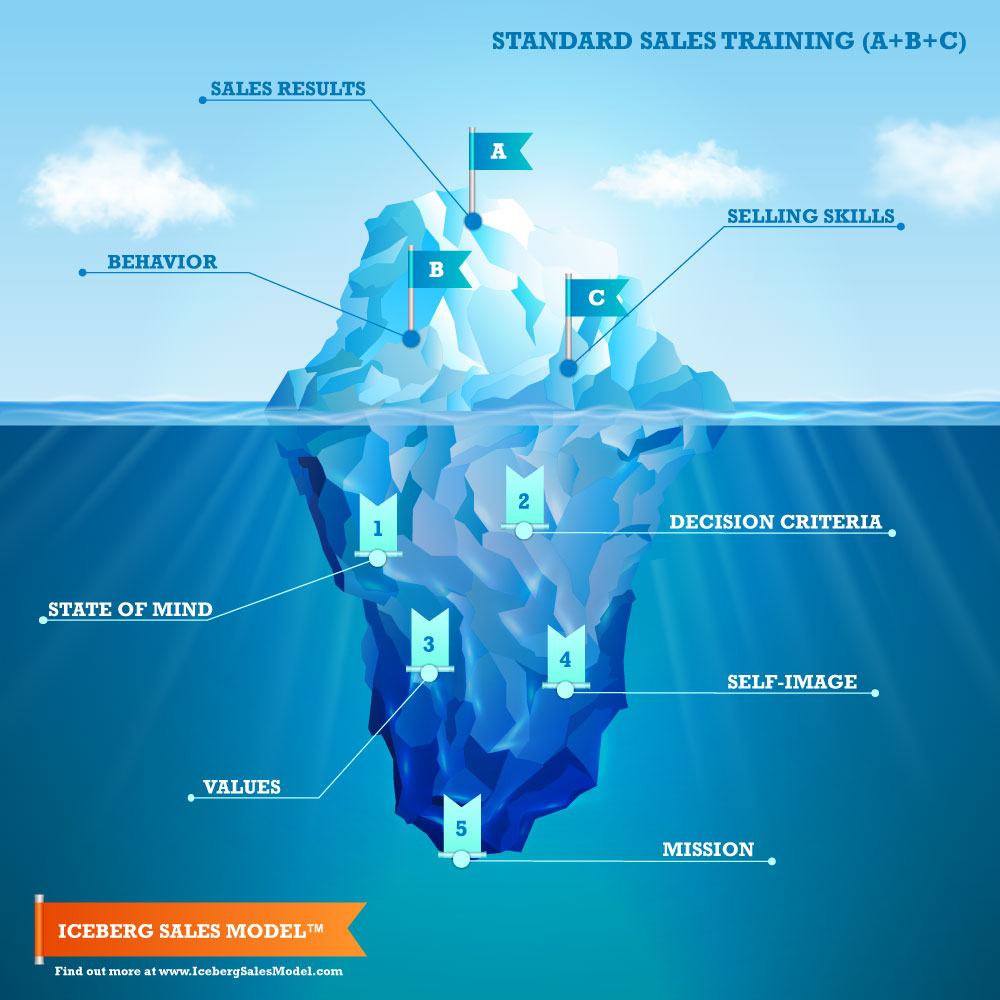Sales Training Models Aren’t Working
According to the American Society of Training and Development, American companies spend approximately $20 billion annually on sales training. Yet a recent study by Sales Performance International shows the percentage of sales reps that consistently attain quota is decreasing from year to year. While the economy certainly plays a role in our ability to sell, the simple truth is that many sales training models just don’t work.
What’s the Problem?
Industry metrics tell us that 50% of the content learned during sales training is not retained past the five-week mark. Much of what companies are paying top dollar for just isn’t sticking. Within 90 days, 84% of what was initially taught is simply – gone. So is all that money your company invested in sales training.
The typical sales model is designed around classroom instruction, behavioral theory and role-plays. Typically, training occurs rapidly over the course of several consecutive days, and then the sales team is cut loose to apply what they’ve learned, with little or no follow-up from the training team. Most sales managers are so focused on driving the team to quota, that they have little time for coaching or follow through on the training they just experienced. Quickly it’s back to business as usual, usually with the same results.
Changing the behavior of the individuals who make up your sales team requires a continuous process of practicing their new skills. Sales reps get into trouble when they fall into ineffective or downright lazy behaviors that ultimately cause them to miss quota. Replacing bad behavior with more effective skills takes time and practice.
In the same way that an athlete practices fundamental techniques over and over until they become muscle memory, so should the sales executive learn new skills, practice, then hone, and practice again.
But selling is about more than just a set of repetitious behaviors like phone prospecting and objection handling. Successfully closing a deal is strongly affected by the underlying skills, beliefs and attitudes of the person conducting the sales process.
A New Model for Sales – The Iceberg

Understanding a sales rep and what motivates them to engage in the process of selling is a complicated endeavor. Imagine an iceberg. Above the water line you can see all the behaviors that lead to a sale; prospecting, cold calling, follow through and documenting. In fact, all of the activities that make up the sales reps process toward quota attainment are above the water line. Surface behavior like closing skills and product knowledge are only part of the capabilities that determine success in sales.
But an iceberg goes deep below the water, making them a dangerous addition to the open sea. What’s lurking below the depths for a typical sales person?
- State of mind Are they motivated to succeed?
- Values What do they deem important?
- Mission Have they truly adopted departmental goals as their own?
- Self-Image Are they confident in their own abilities?
- Criteria Are they practicing self-responsibility for their actions?
The Iceberg Model goes below the surface of a sales reps activity to evaluate and hone the internal motivations that drive behavior. Standard sales training models focus on the most visible, conscious elements like surface skills and activity levels. That’s why traditional sales training simply doesn’t stick.
Traditional sales training focuses strictly on external skills development. They provide better objection-handling skills, better closing skills, additional product knowledge, or better cold calling scripts, but none of it really makes any difference because they don’t venture below the surface. This is why, even though many companies are engaging in sales training, the results don’t change.
When you tackle the underlying reasons for behavior: state of mind, convictions, belief, and self-esteem, the external manifestations of these strongly held belief systems will improve, leading to more effective activities – and an increase in closed deals.
Everything that is not visible makes all the difference in selling. Napoleon Hill said, “Enthusiasm is one of the most important requisites in salesmanship, no matter what one is selling.”
Making small incremental changes underneath the surface can have big, positive outcomes on the top.
Using Iceberg to Understand Client Behavior
Human beings are complicated and when it comes to buying a product or service, particularly in a B-2-B sale, there are underlying economic, political and social factors that affect the sales process. The Iceberg Sales Model not only delves beneath the surface of a sales executives external behavior, it teaches how to ask the best qualifying client questions to find out their state of mind, their decision criteria, values, and personal self-image that will affect the sales process.
What is the most common element missing from a typical sales process? Engaging conversation that creates the bond and rapport needed to close a deal. The Iceberg Sales Model teaches sales teams how to create buy-in with an audience – your potential customer – and how to fully engage them in your own success.
The Iceberg Sales Model is laser-focused on two primary goals:
- The individuals that make up your sales team. What are their beliefs about sales, their clients, and the market? How do they feel about the company and the products they’re selling? What motivates them to succeed?
- How to uncover the client’s motivation? What is their decision-making making process? What is their selection criteria? Further, what internal or external factors are affecting interactions with your sales rep?
If you cannot currently answer these questions, then the Iceberg Sales Model is exactly the training you should consider. If your organization struggles to meet sales performance metrics, the Iceberg Sales Model is exactly the change that will drive performance across the sales continuum.
The model was designed to create goodwill and connections that will last for a long time between your company and a potential prospect. The model engages both the sales person and their prospect in an enjoyable, natural experience that will foster greater sales for your organization.
Contact us today for a complimentary consultation that could have an immediate impact on your bottom line.

